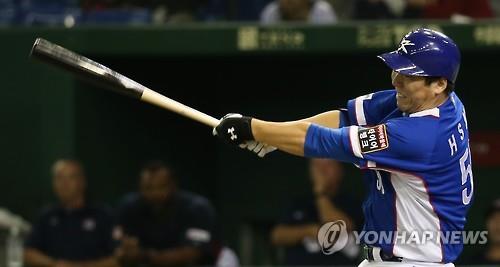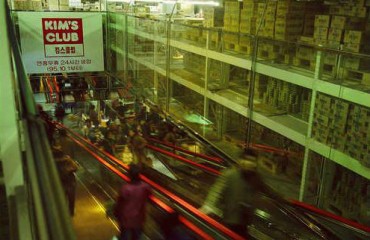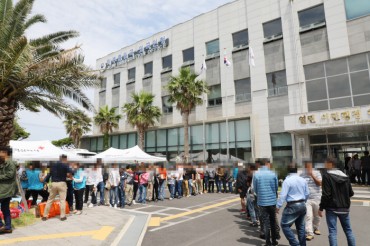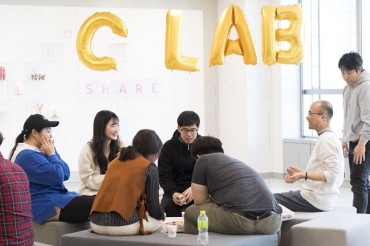
South Korean outfielder Kim Hyun-soo, seen here hitting a double against the United States in the final of the Premier 12 baseball tournament at Tokyo Dome in Tokyo on Nov. 21, 2015, has agreed to a two-year deal worth US$7 million with the Baltimore Orioles, pending a physical. (Image : Yonhap)
SEOUL, Dec. 18 (Korea Bizwire) – Once his reported two-year deal worth US$7 million with the Baltimore Orioles is complete, South Korean All-Star Kim Hyun-soo should immediately fill the club’s pressing needs on both ends of the game as a left-handed hitting outfielder.
If Kim, 27, passes his physical, he will become the first player to jump from the Korea Baseball Organization (KBO) to Major League Baseball (MLB) via free agency. Three players who made the transition before him, including Minnesota Twins’ infielder Park Byung-ho earlier this month, went through the posting system.
Kim, who has played for the reigning KBO champion Doosan Bears since 2006, is about to join the Orioles club that won 96 games to take the American League (AL) East crown last year but got pushed around by the Toronto Blue Jays and New York Yankees to finish third with 81 wins in 2015.
The O’s can certainly use some stability in left field, Kim’s natural position, after using 11 different players there in 2015. They would also need some left-handed presence to provide their middling offense with more balance. Especially with free agent first baseman Chris Davis, the team’s only power threat from the left side of the plate in 2015, unlikely to remain in Baltimore.
The left field was a busy revolving door for the Orioles. The players there committed only four errors combined out of 319 chances — the O’s as a team had the fewest errors in the AL with 77 — but the left fielders managed to hit just .210/.287/.353. Only the Oakland Athletics and the Los Angeles Angels had worse on-base-plus-slugging percentage (OPS) from their left fielders.
No one appeared in more than 50 games in left, with David Lough leading the way at 49. He batted only .201/.241/.313 with four homers and 12 RBIs in 84 games overall. Lough is a free agent.
Steve Pearce was next with 41 games in left, but the 32-year-old, who enjoyed a career year in 2014 with 21 home runs and a .293/.373/.556 line in 102 games, saw his production drop to 15 homers with a .218/.289/.422 line in 92 games this past season. Pearce, too, is a free agent this year.
Nolan Reimold got some reps in left in his second tour of duty with the Orioles, but he wasn’t much better than Lough or Pearce, slashing .247/.344/.394 with six home runs in 61 games.
The opportunity seems ripe for the taking for Kim, one of the KBO’s most durable and productive players at any position over the past decade, with an improving defense in left field.
Dubbed “Hitting Machine,” Kim, who debuted in 2006 but became a regular the following year, was a career .318 hitter in the KBO, the second-highest average among all active players with at least 3,000 plate appearances. He also has a career on-base percentage of .406.
In 2015, Kim, listed at 188 centimeters and 100 kilograms (6-foot-2 and 220 pounds) posted his best power numbers with 28 home runs and 121 RBIs, along with a robust .326/.438/.541 line. He ranked among the top 10 in the Triple Crown categories, plus walks, on-base percentage, OPS, runs scored, hits, total bases and multi-hit games.
On defense, Kim led all KBO left fielders in defensive innings played (2,633), putouts (590) and assists (21) over the past three seasons. He has missed only 12 games in that span.
Kim struck out only 63 times in 630 plate appearances while drawing 101 walks in 2015. For his career, Kim has 597 walks against 501 strikeouts in 1,131 games.’
It’s this combination of power, contact ability and plate discipline that lured MLB clubs this winter.
The Orioles showed off some pop in 2015 with 217 home runs, good for third in the AL behind the Blue Jays and the Houston Astros. Davis led the majors with 47 homers and third baseman Manny Machado belted a career-high 35 dingers.
Yet with Davis also leading MLB with 208 strikeouts, the O’s had the third-most strikeouts in the AL with 1,331. They only drew 418 walks to rank 13th in the AL, and their on-base percentage was also in the bottom third of the league.
The O’s could live with Davis’ free-swinging ways as long as he launched those long balls and drove in runs, and he was also the team’s only real threat from the left side of the plate.
The Orioles recently withdrew their offer to the 29-year-old free agent — they earlier traded for right-handed hitting first baseman Mark Trumbo as insurance — and Davis’ departure would leave the club with no viable power option among left-handed hitters. They’d have to count on oft-injured switch-hitting catcher Matt Wieters to stay on his feet and recover his power stroke.
Machado was the team’s primary, if unconventional, leadoff man in 2015, and he did set career-highs with a .359 on-base percentage and 70 walks, 41 more than his previous personal best. Machado also stole 20 bases after not stealing more than six in any of his previous three seasons.
Given Kim’s ability to put the ball in play and get on base, he could become the No. 2 hitter and serve as the left-handed bridge between two right-handed bats, Machado and primary No. 3 hitter Adam Jones.
In 2015, switch-hitting Jimmy Paredes made 49 appearances at the No. 2 hole to lead the club, and he batted .307/.340/.470 from that spot, along with eight home runs and 28 RBIs. As a team, the Orioles got decent production from the 13 players who occupied that spot this past season, with 23 homers, 75 RBIs and a .255/.311/.405 line.
It remains to be seen how Kim’s numbers in the offense-happy KBO will translate to the majors, where he will surely face tougher pitching in larger ballparks.
It must be noted, though, Kim played his entire KBO career in the league’s most cavernous and pitcher-friendly ballpark, Jamsil Stadium in Seoul, and now he is about to move into one of the most hitter-friendly parks in the majors.
At Jamsil, it’s 100 meters down the right field and left field lines, and 125 meters straightaway center. It is 120 meters each to left-center and to right-center.
In comparison, it’s a little over 101 meters to left, 97 meters to right, and 122 meters to center at Oriole Park at Camden Yards. It’s 111 meters to left-center and 114 meters to right-center.
Camden Yards has consistently ranked near the top in Park Factors, which compare the rate of offensive stats at home versus the rate of those stats on the road. A rate higher than 1,000 favors the hitter, while a rate below the mark favors the pitcher.
ESPN’s Park Factors measure rates in runs scored, home runs, hits, doubles, triples and walks. In 2015, Camden Yards ranked in the top three in runs, homers and hits, and had a 1.415 rating in the long ball category to rank behind only 1.432 for Miller Park, home of the Milwaukee Brewers. No other stadium even reached 1.300.
In the South Korean Park Factor scale, as calculated by the statistics site Statiz, a rate above 1,000 favors the hitter and a number below it favors the pitcher. Jamsil Stadium had the lowest mark in the home run category with 652, nearly 300 points worse than the next stadium.
(Yonhap)






